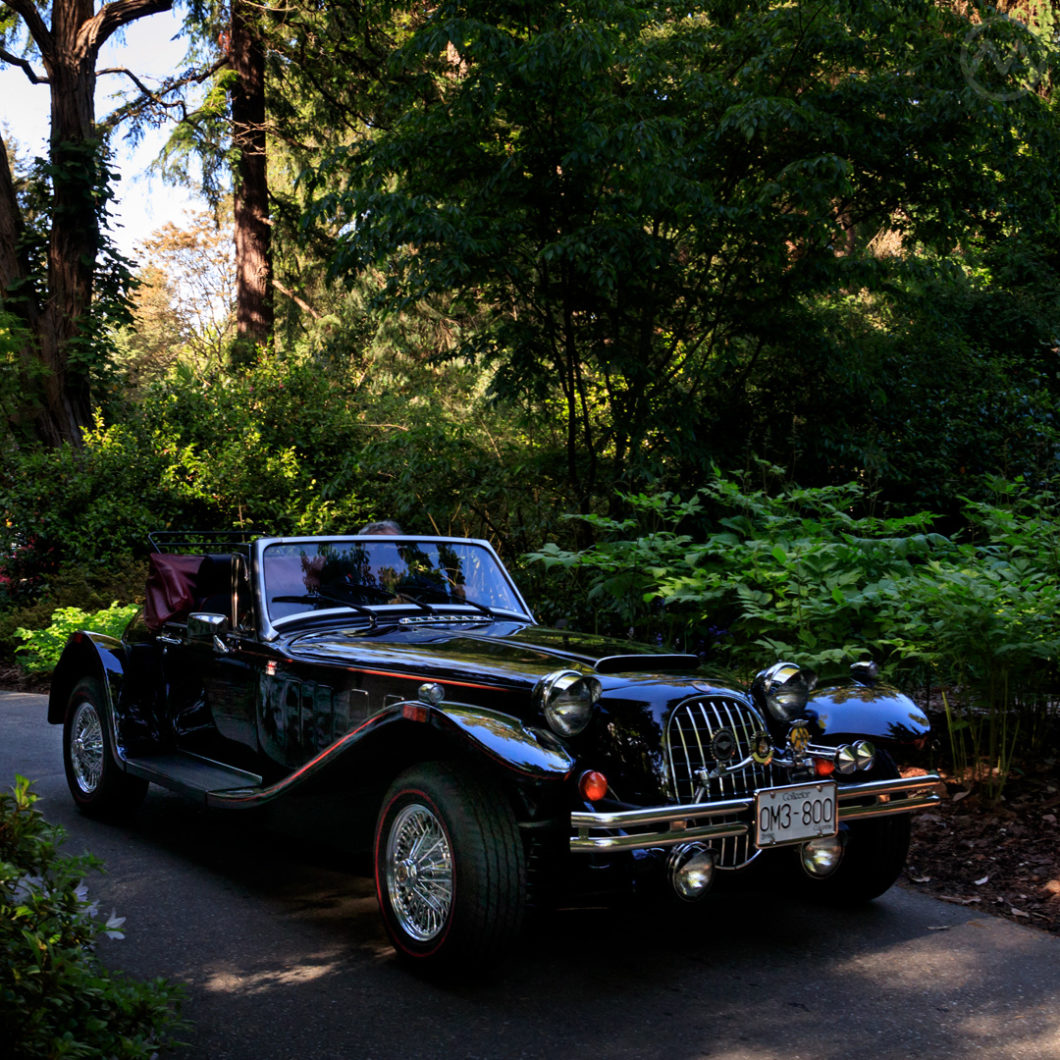Robert Jankel had always been a car enthusiast and restorer, but he was a fashion designer by trade until, on a trip to Spain, he was offered a princely sum for a Rolls-Royce he’d restored. Figuring he could build his own cars, he gave up clothes to found Panther Westwinds of Surrey in the early 1970s.
His cars were “neoclassics” – retro styled modern cars using proven mechanicals, a popular trend in the 1960s and 1970s that arguably began in America with Brooks Stevens’ Excalibur – a V8 powered modern car styled after a 1928 Mercedes SSK.
Cars that look vintage but drive modern have always had a market, but many have been awkward marriages of ye olde styling and new pieces underneath (or even on the outside to keep costs down).
Modern mechanicals don’t often reflect the proportions of the past, and “neo-classics” ran the gamut from rather nice tributes to honestly cringeworthy pimpmobiles.
Jankel’s first two cars were on opposite ends of that spectrum. The J72 was a near-replica of the 1930s SS100 – updated with a modern chassis and Jaguar XJ6 or XJ12 power.
The less harmonious De Ville was a (very) faux Bugatti Royale whose body used the central section of a BMC 1800 sedan. The latter is best remembered as the car Glen Close drove as Cruella De Ville in 1996’s “101 Dalmations.”
This pair were followed in 1974-5 by the Rio, a fancified (and very expensive) Triumph Dolomite, and the FF, an Allard-like special with a Ferrari V12 built for Swiss car impresario Willy Felber.
The J72 was not a kit car – they came only fully assembled, and they weren’t cheap. Jankel was ambitious, but side projects like the Rio, De Ville, and FF were pretty much dead ends; as was a 1977’s Panther 6, a supercar inspired by the Tyrell P34.
The J72, however, quickly proved popular – despite coming at a time when low-volume British specialty cars were suffering – and led to a line of successful, respected retro sports cars.
Lima: Beyond the J72
In 1976 it was joined by the lighter and cheaper Lima.
Many 1970s neo-classics used bits from production cars to keep costs down and as with the De Ville, the Lima used doors and a windshield from an MG Midget blended into a new fiberglass body. Mechanical pieces came from Vauxhall’s Viva and Magnum, including the Magnum’s 108-hp 2.3L four and 4-speeder.
Many neo-classics were hefty boulevardiers, but at just over 1,800 lbs., the Lima was quick and responsive. It did all the things a conventional small sports roadster did and it did them fairly well. It got even faster in 1979 with the addition of a turbocharger for 178 hp.
Unusually, Panther actively marketed the cars in North America and federalized them for the U.S., with importers in Ontario and California.
U.S.-spec cars weren’t as fast as U.K. ones, but buyers liked them. Overexpansion and recession in the U.K. drove Panther Westwinds into bankruptcy in 1979-1980, but by then they’d sold over 500 Limas (of 897 total), more than all the 1970s Panther models combined.
Panther’s Korean Rescuer
The company was rescued by Korean shipping container magnate Young C. Kim and production restarted in 1981, with the Lima eventually replaced by the heavily re-engineered, Ford-powered Kallista.
The new car offered V6 power as well as fours and the Kallista ultimately proved Panther’s most popular car (more than 1,600 were made).
During Kim’s ownership, the company developed a modern mid-engine small sports car – the Solo. Originally, this car was planned to be a cheap sports car using a 1.6L Ford Kent engine.
The arrival of the Toyota MR2, however, meant that such a car would never be price competitive – so the Solo grew into a junior exotic, as did its development costs. Overruns ultimately led Kim to sell the company to Korean giant Ssangyong (better known for SUVs) in 1987.
The Solo did eventually see very limited production, and Ssangyong continued to build the Kallista in the U.K. into 1990. It then moved production to South Korea for a limited run in the early 90s.
Jankel, in the meantime, expanded his original coachworks, at first just a restoration facility, into a new company (the Jankel Group). Here he continued to build custom cars into the 1990s – mostly customized Rolls-Royces, Bentleys, and Range Rovers but also armored law enforcement vehicles.
He ultimately bought back the rights to Panther Westwinds in 2001. The Jankel Group still exists today.
Sadly, he passed away from Pancreatic cancer in 2005 – but people are still enjoying his creations.

